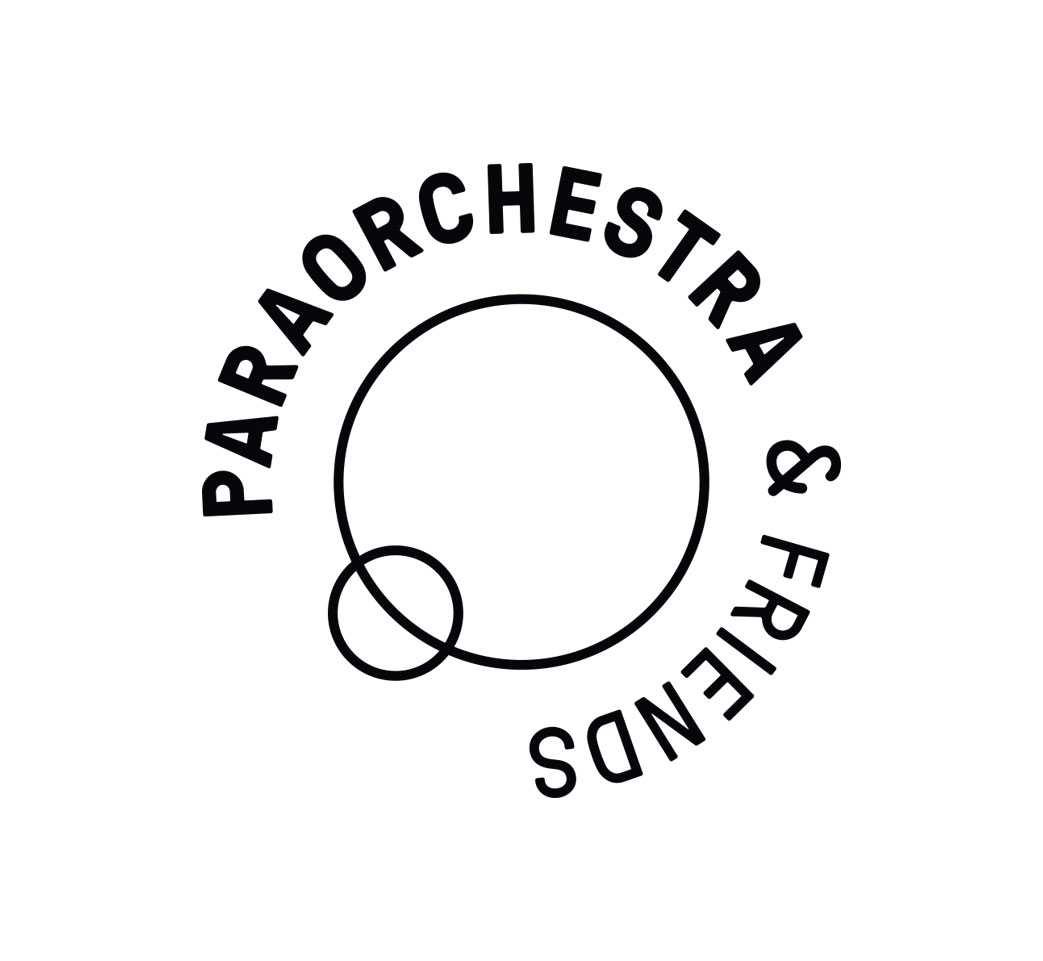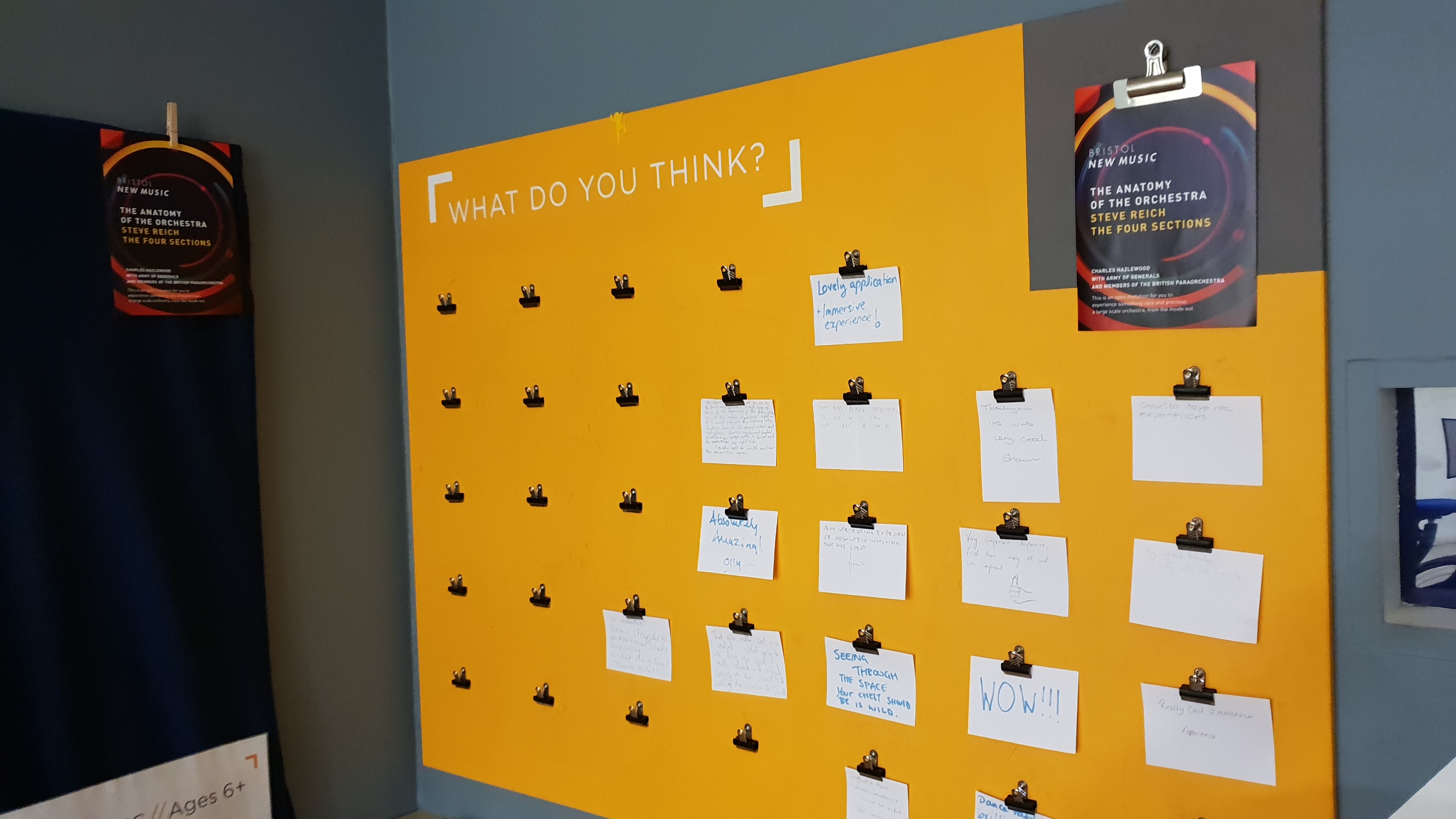// Projects / Anatomy of the Orchestra 360 VR
The Anatomy of the Orchestra:
VR Experience

© copyright Bristol Music Trust (2018)
Description
 The Anatomy of the Orchestra: A VR Experience (AnatomyVR) is a Cinematic VR artefact (360° film) that captured a visceral, live performance as an immersive audio-visual experience.
The Anatomy of the Orchestra: A VR Experience (AnatomyVR) is a Cinematic VR artefact (360° film) that captured a visceral, live performance as an immersive audio-visual experience.
Presented by The Paraorchestra and Friends in April 2018, a live orchestra performed The Four Sections, a rare work for symphony orchestra by influential contemporary composer Steve Reich, by 51 musicians, across the four levels the Bristol Beacon’s iconic atrium. An audience moved in and amongst this large-scale sonic installation, experiencing their own unique balance of instruments and creating an unprecedented ‘access all areas’ orchestral invitation.
A crew of students (Mathew Knight and Alexandre Hurr) and local start-up partners (Biome Productions), came together in the capture and post-production of the Cinematic VR artefact. The film was commissioned by Ben England and Phil Castang from Bristol Music Trust; supported by event organiser Hannah Walton, event engineer Andy Rose; with artistic direction by conductor Charles Hazlewood, and technical direction and lead producer Luke Reed
A range of cutting-edge audio recording methods were analysed and synthesised from intersections between conventional film production and multichannel live audio engineering to overcome the non-standard arrangement of performers in a location not built with the common infrastructure of traditional recording environments. These included ambisonic, digital audio, AoIP and timecode synced satelitte recording systems.
The post-production explored novel spatial audio techniques for immersive film. Resulting in a unique approach that brokered perceptual and technical concerns in the synthesis of large-scale immersive musical sound stages. The film revealed new understanding in editing of immersive audio-visual material within a musical performance context, recognising the role of musical congruence in editing and techniques for creating a zoned sub-mixing method for distance sources. The film is one of few 360 music films that makes use of height which is a central point of difference over traditional surround audio paradigms (e.g. 5.1)
Anatomy of the Orchestra VR was funded by Arts Council England as part of the annual Bristol New Music programme, with additional funding from the Higher Education Innovation Fund. The work premiered at Encounters Film Festival (2018) alongside showings at the Bristol Beacon, We The Curious and regional venues.
Online Release
This embedded video contains the YouTube version of the film containing 1st Order Ambisonics. This results in a technically sub-optimal spatial resolution of the audio and heavy video compression when compared to the festival exhibtion version.
Audience Response

During initial showings at the Bristol Beacon and We The Curious a set of informal audience studies were carried out. Participants were encouraged to anonymously write thoughts and comments to be pinned to a feedback wall. Capturing public reactions to this new form of immersive media would help to guide ourselves and our partners in evaluating how we might engage new audiences with contemporary classical music and emerging technologies.
Responses from the audience were broad and captured a range of opinions from first time exposure to VR, positive and negative responses to the technology and the music, as well as reports of confusion, sensory overload and issues surrounding accessibility.
"First time using VR and was impressed"
"Seeing through the space your chest should be is wild"
"Brain struggled to understand what's happening"
"The VR was cool... shame about the music"
I suffer from vertigo - this should come with a warning!"
While many responses were positive and encouraging (perhaps influenced by the our presence as the exhibitors), the comments surrounding accessibility and issues with the exhibition method were the most valuable and challenged an assumption that novel technology is key to engaging new audiences. While some mention the technology as a reason for seeking out the exhibition others highlight the need for carefull curation of the exhibition space, onboarding with an fairly invasive accessory (headmounted display and headphones), and informing audiences of the full content in advance. Experiences thought to be fairly tame such as this (static shots, low action, non-confrontational subjects) still elicited strong, visceral responses from audience members. These comments would go on to inform the team and partners exhibition strategy and work with local leaders in this subject, such as Catherine Allen and Limina Immersive in preparetion for the premiere at Encounters Film Festival.
Paper Publication
The production and post-production methods were critically discussed in a conference paper published at the Audio Engineering Society International Conference on Immersive and Interactive Audio 2019 March 27–29, York, UK.